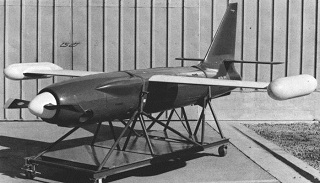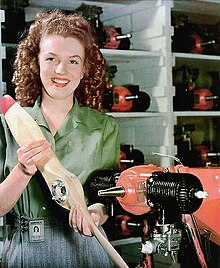
The AQM-38 was an American target drone, developed during the 1950s by the Radioplane Division of the Northrop Corporation, Newbury Park, California, and manufactured by its Ventura Division at Van Nuys, California. Extensively used for surface-to-air missile training, over two thousand were built during its production run and it saw continued use within the United States Army and United States Navy for nearly twenty years.

Reginald Leigh Dugmore, known professionally as Reginald Denny, was an English actor, aviator, and UAV pioneer.

UAVs include both autonomous drones and remotely piloted vehicles (RPVs). A UAV is capable of controlled, sustained level flight and is powered by a jet, reciprocating, or electric engine. In the twenty first century technology reached a point of sophistication that the UAV is now being given a greatly expanded role in many areas of aviation.

The Radioplane BTT, known as RP-71 by the company, as WS-426/2 by the United States Navy, and as WS-462/2 by the US Air Force, is a family of target drones produced by the Radioplane Company.

The MQM-61 Cardinal was a target drone designed and built by Beechcraft.

The Culver PQ-14 Cadet is a modified version of the Culver LFA Cadet used as a target drone.

The Radioplane Q-1 was an American target drone, developed in the early 1950s for the United States Air Force by the Radioplane Company. Originally powered by a pulsejet engine, then later developed as an improved turbojet-powered aircraft, the Q-1 failed to win the favor of the USAF. However, the aircraft provided the basis of the GAM-67 Crossbow anti-radar missile.

The Radioplane RP-77 was a small target drone missile, constructed largely of plastic materials, produced by the Radioplane division of the Northrop Corporation. Although the RP-77D was successfully tested by the United States Army, the decision was made not to procure the aircraft.
The Righter/Kiekhaefer O-45 was an air-cooled, two-stroke aircraft engine of flat-twin configuration, used extensively for powering target drones in the late 1940s.

The Globe KD6G Firefly is an American target drone, built by the Globe Aircraft Corporation for operation by the United States Navy during the 1950s and early 1960s.
The Frankfort OQ-16, also known as the TD3D, was a target drone designed by the Frankfort Sailplane Company for use by the United States Army Air Forces and United States Navy.

The Radioplane Company was an American aviation company that produced drone aircraft primarily for use as gunnery targets. During World War II, they produced over 9,400 of their Radioplane OQ-3 model, a propeller-powered monoplane, making it the most-used target aircraft in the US. In the post-World War II era they introduced their Radioplane BTT series, which was produced for years and eventually reached almost 60,000 examples. They also produced several radio control and self-guided missiles, the largest being the GAM-67 Crossbow, which did not enter service. The company was purchased by Northrop Corporation in 1952, and moved to one of Northrop's factories in 1962. One of the last projects carried out at the original Radioplane factory in Van Nuys, California, was the construction of the Gemini Paraglider.

The Radioplane OQ-17 was a target drone produced by the Radioplane Company for the United States Army Air Forces and, as the TD4D/KDR Quail, the United States Navy. Suffering from an unreliable engine, the OQ-17 production run was cut short in favor of the OQ-19.
The Radioplane OQ-6 was a target drone developed by the Radioplane Company under the designation RP-14 and evaluated by the United States Army Air Forces for service use. A small number were procured, but major production contracts were cancelled by the end of World War II.
The OQ-15 was a prototype American subscale drone built for the US Army Air Forces in the mid-1940s.
The OQ-18 was a prototype American subscale RPV built for the US Army Air Forces in the mid-1940s.
The Radioplane OQ-12 was a target drone in the United States, manufactured by the Radioplane company.
The OQ-5 was a proposed target drone design in the United States.













